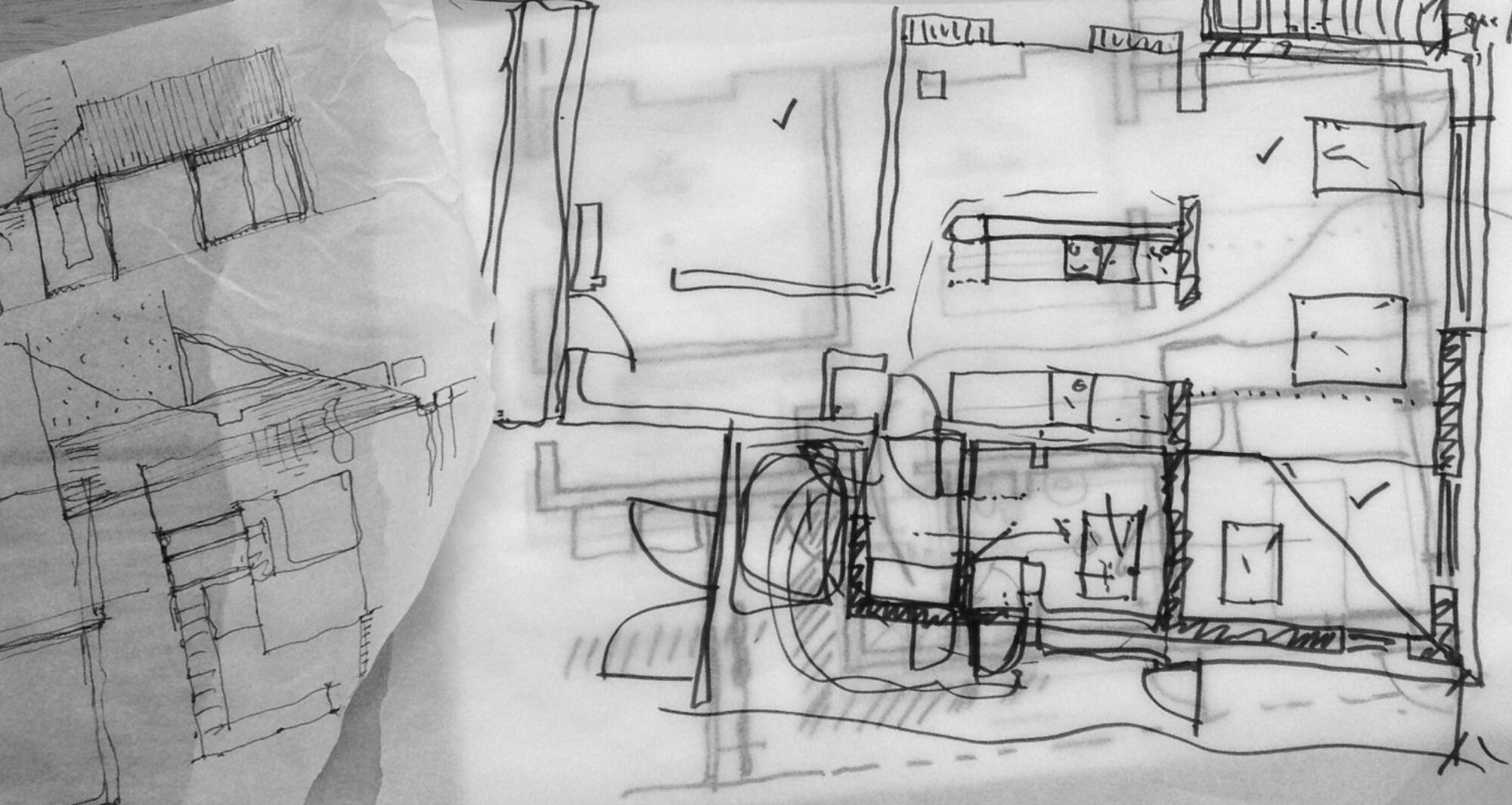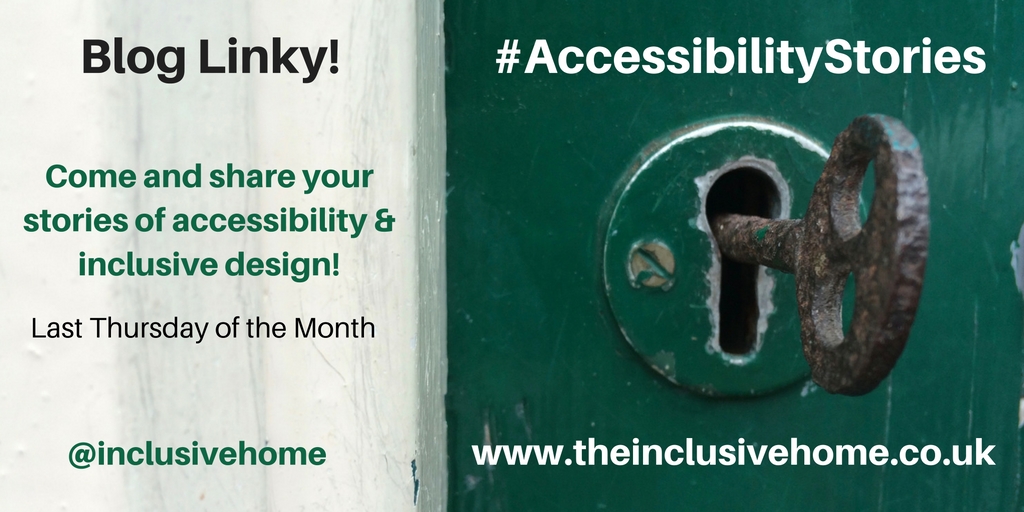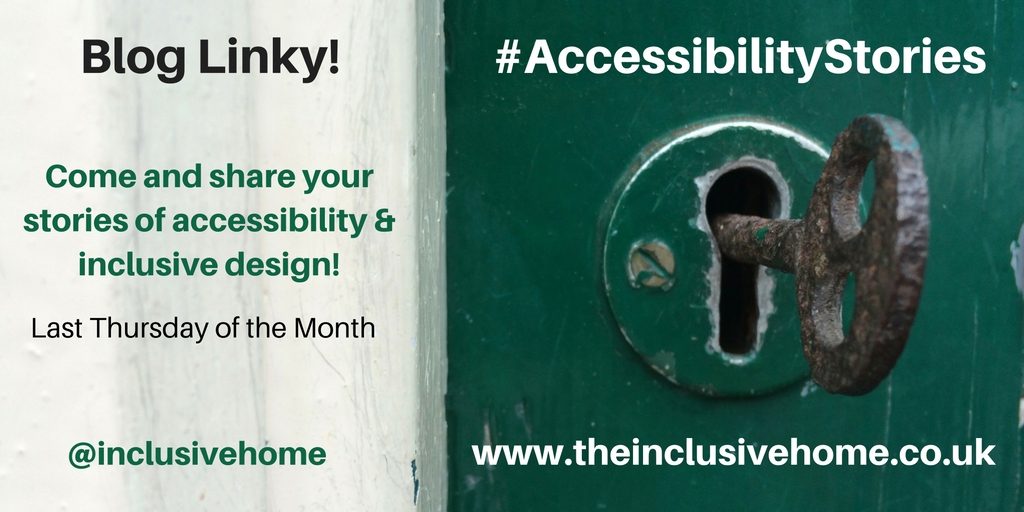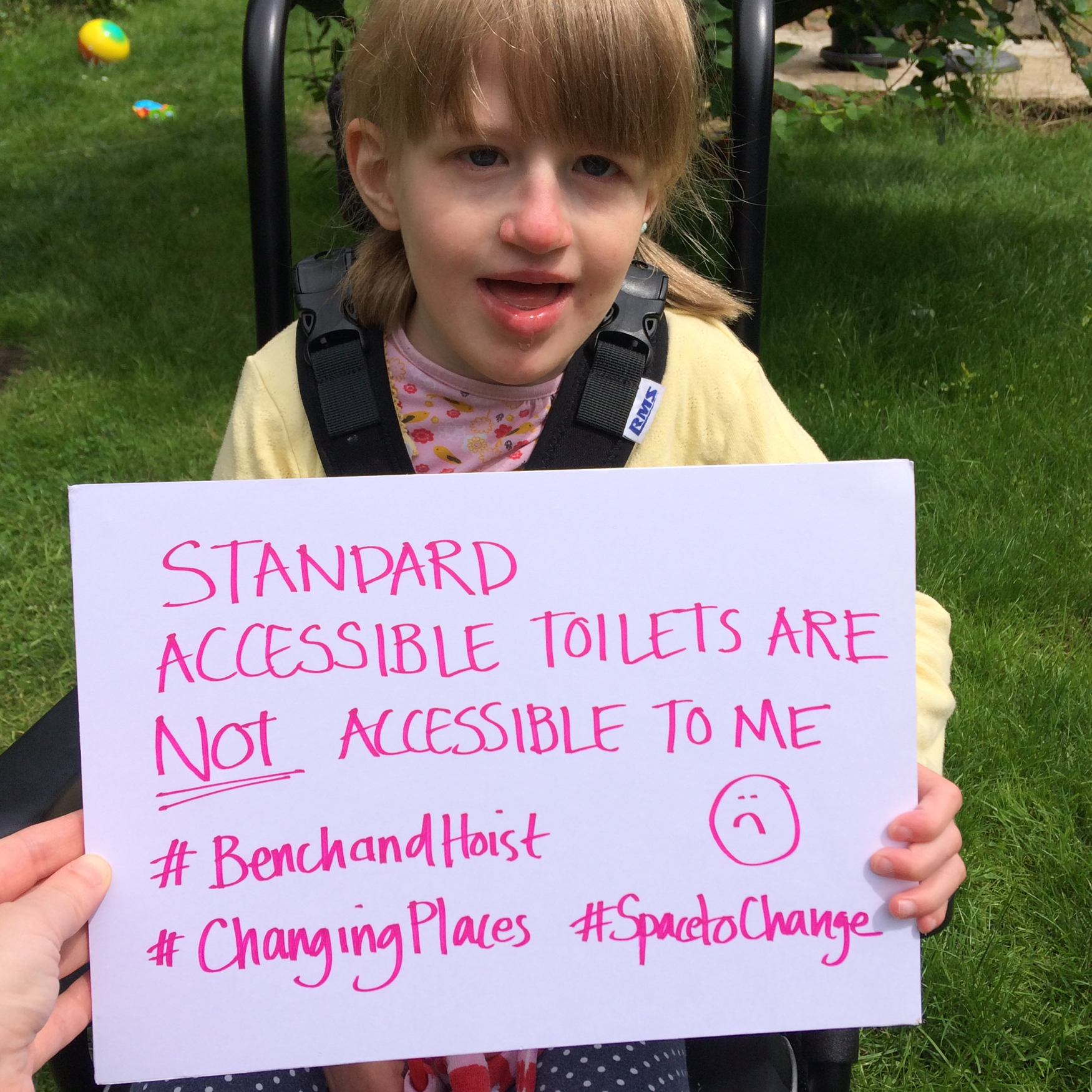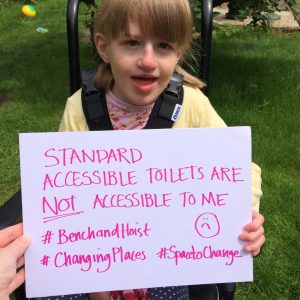Thank you so much to everyone who linked up with #AccessibilityStories last month!
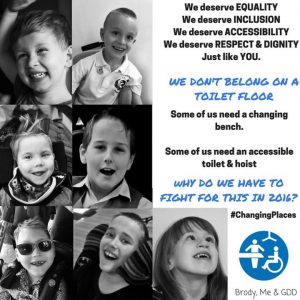 There has been much discussion within our campaign group about why the need for Changing Places toilets has not really reached the conscious of the general public and, when it does, it’s often misunderstood as Brody Me and GDD describes in Sorry for the Inconvenience. Of course the official Changing Places campaign has made huge headway (from zero provision!) in it’s 10 years, but at still less than 900 toilets in the whole UK, we felt that perhaps us independent campaigner bloggers could shake things up a bit more if we got together!
There has been much discussion within our campaign group about why the need for Changing Places toilets has not really reached the conscious of the general public and, when it does, it’s often misunderstood as Brody Me and GDD describes in Sorry for the Inconvenience. Of course the official Changing Places campaign has made huge headway (from zero provision!) in it’s 10 years, but at still less than 900 toilets in the whole UK, we felt that perhaps us independent campaigner bloggers could shake things up a bit more if we got together!
So at the end of last month Brody Me & GDD rallied a group of bloggers to publish a wave of posts about the lack of fully accessible toilets, in the hope that a surge of posts, coming from a range of perspectives, might break through the social media noise and reach new people. And I think we succeeded, at least to some extent!
The name ‘Changing Places’ can be a bit confusing and abstract from peoples lives. Having a mix of parent bloggers, who don’t normally write about toilets (well some of them do, but maybe not always about changing places!), might make the story more relatable to people who don’t need them.
We decided on Halloween as a date to publish and decided on the theme of #phantomloos (as standard accessible WCs just being an illusion of accessibility to many of us!).
Many of the bloggers hooked up to last month’s #accessibilitystories and there are so many amazing posts I figure it’s just better if you hop over there and have a browse! I’ll just pick out this storyboard style post by Little Mama Murphy which gives such a clear description of what we are talking about and why, that surely it’s just obvious there should be more changing places! You can also check out this #PhantomLoos storify a try to capture the mood around the hashtag on twitter.
The most exciting thing to come of the flurry of activity was that a BBC journalist contacted a number of us who had taken part as she was writing up this fantastic article, When does accessible not mean accessible?, published last weekend, on #worldtoiletday!
The linky wasn’t only about toilets though!
Rainbows Are Too Beautiful linked up this beautiful, balanced and heartfelt open letter to Tess Stimson in response to an article she wrote about ‘disruptive’ behaviour in public places. Rainbows Are Too Beautiful explains how precarious it can be as a family trying to walk that line between tolerance and intolerance and how the limitations society places on what is acceptable can deny people access to typical family life. Have a scroll through the comments to see a thoughtful response from Tess Stimson herself.
And finally A Hunter’s Life posted a great list of their families favourite products! I’m always excited to share great inclusive product ideas, especially those (usually the mainstream products) that don’t come with the higher ‘special needs’ or ‘disability’ price tag!
The linky for November is now open and I’m really looking forward to reading some fab posts from friends old and new!
Please read the guidelines and then get linking below (the linky will be open for 2 weeks)!
Guidelines:
- Link up to 2 posts each month (old or new)! I don’t have a badge, but it would be lovely if you could add a text link back to my site so people can find the linky and read the other blog entries;
- Please comment on this post to introduce yourself if you’re new to the linky, and comment on some of the other linked posts to help share ideas and experiences!
- It would also be amazing if you could share your post (using the hashtag #AccessibilityStories) on social media to help spread awareness of the issues around accessibility! I’ll also try to retweet as many posts as I can!
- I welcome input from anyone that is affected by accessible design – users, carers, friends and family as well as designers, developers, managers and legislators (so pretty much everyone then!). I welome blogs from professionals and suppliers as well as individual bloggers as long as they keep within the spirit of idea exchange and are not sales posts for products or services.
